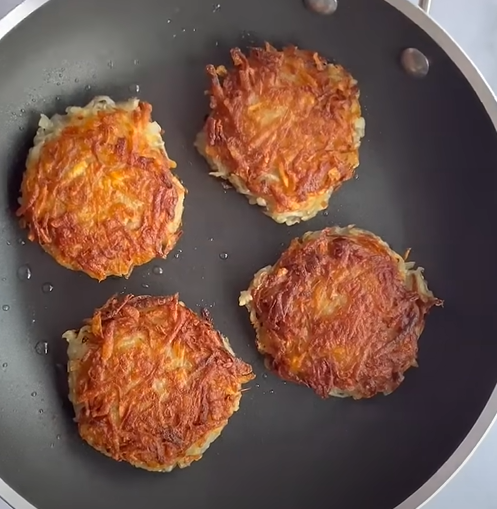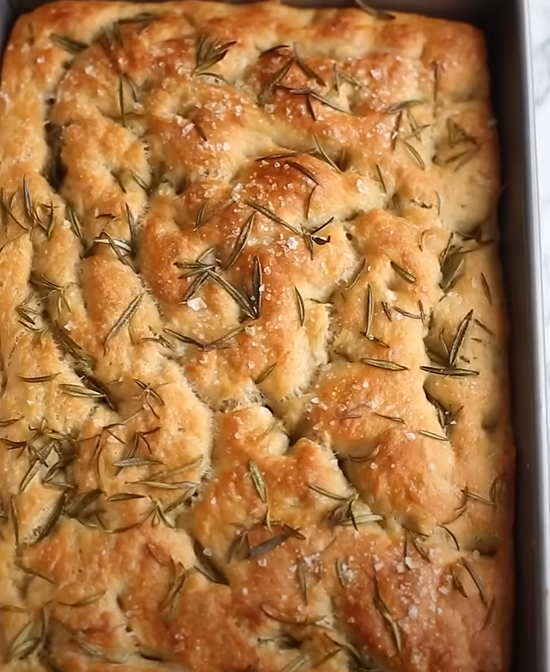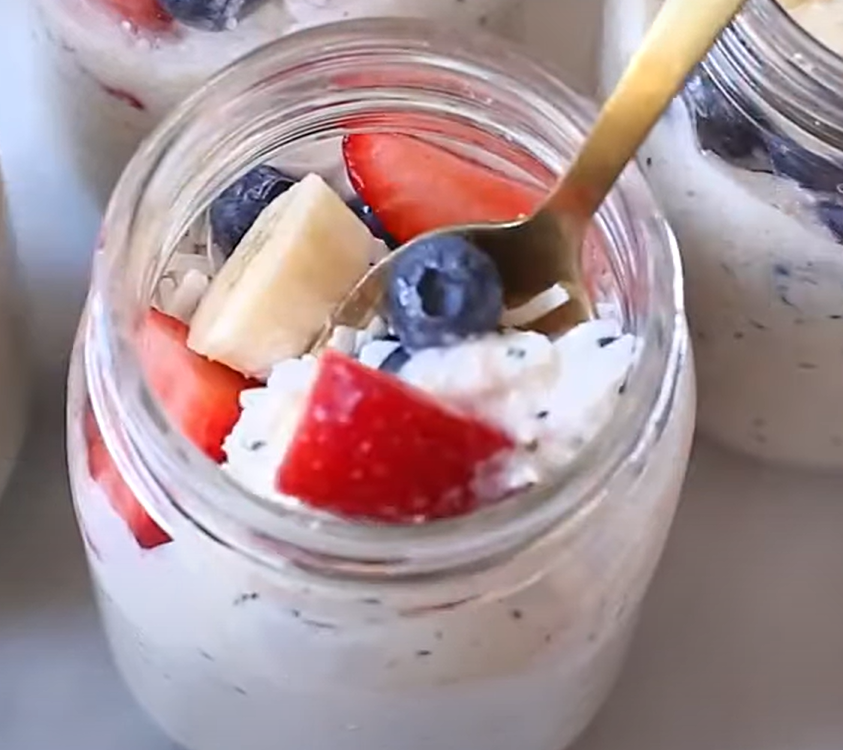I’ve been baking for over fifteen years, and I can honestly say that few recipes bring as much joy to both the baker and the eater as these Big Blue Monster Stuffed Cookies. When I first stumbled across the concept of stuffed cookies, I knew I had to put my own spin on them. These vibrant, playful treats combine the nostalgic charm of monster cookies with the delightful surprise of a hidden center that makes every bite an adventure.
The beauty of these cookies lies not just in their stunning blue color, but in their incredible texture contrast. The soft, chewy exterior gives way to a variety of mix-ins that create both visual appeal and flavor complexity. Whether you’re making them for a children’s birthday party, a themed event, or simply because you want to bring some whimsy into your kitchen, these cookies never fail to impress.
Understanding the Big Blue Monster Cookie Concept
Monster Cookie : A large, loaded cookie typically containing multiple mix-ins like chocolate chips, candies, nuts, and sometimes oats or peanut butter
Stuffed Cookie : A cookie technique where additional filling or ingredients are enclosed within the cookie dough before baking
Blue Food Coloring : Food-grade coloring agent that creates vibrant blue hues in baked goods without significantly altering taste
Mix-ins : Various small ingredients added to cookie dough to provide texture, flavor, and visual interest
The concept behind these cookies stems from the classic monster cookie tradition, where “more is more” when it comes to add-ins. I’ve elevated this concept by incorporating a stuffing element that creates surprise and delight with every bite. The blue coloring isn’t just for show – it creates a fun, playful aesthetic that makes these cookies perfect for themed parties or when you want to create something truly memorable.
Essential Ingredients and Their Roles
Understanding each ingredient’s purpose helps ensure consistent results every time I make these cookies. The foundation starts with quality butter, which I always bring to room temperature for proper creaming. This creates the tender, soft texture that makes these cookies so irresistible.
The flour-to-fat ratio in this recipe creates cookies that hold their shape while remaining soft and chewy. I use a combination of brown and white sugars because brown sugar adds moisture and creates that coveted chewy texture, while white sugar contributes to the cookies’ structure and helps them spread properly.
The blue food coloring requires special attention. I prefer gel food coloring over liquid because it provides more vibrant color without adding excess moisture to the dough. Start with less than you think you need – you can always add more, but you can’t take it away.
For the stuffing component, I typically use a combination of white chocolate chips, mini marshmallows, and colorful candies. The key is choosing ingredients that won’t completely melt during baking, maintaining that delightful textural surprise.
Detailed Ingredient Analysis Table
| Ingredient | Purpose | Quality Tips | Substitution Options |
|---|---|---|---|
| All-purpose flour | Provides structure and body | Use unbleached for better flavor | Can substitute up to 1/4 with whole wheat |
| Unsalted butter | Creates tender texture and rich flavor | Room temperature, pale yellow color | Margarine works but reduces flavor |
| Brown sugar | Adds moisture and chewy texture | Pack firmly when measuring | Light or dark both work well |
| White sugar | Contributes to structure and spread | Fine granulated preferred | Superfine sugar works excellently |
| Large eggs | Binds ingredients and adds richness | Room temperature for better mixing | Cannot substitute in this recipe |
| Vanilla extract | Enhances overall flavor profile | Pure extract over artificial | Almond extract can be substituted |
| Blue food coloring | Creates signature color | Gel coloring recommended | Natural blue spirulina powder alternative |
| Baking soda | Chemical leavening agent | Fresh, not expired | Baking powder can substitute (use 2x amount) |
| Salt | Enhances flavors and balances sweetness | Fine sea salt or table salt | Kosher salt works (use slightly more) |
| Mix-ins | Texture and flavor variety | Fresh, high-quality ingredients | Endless customization possibilities |
Step-by-Step Preparation Process
My approach to these cookies involves careful attention to timing and technique. I start by preheating my oven to 350°F (175°C) and lining my baking sheets with parchment paper. This prevents sticking and ensures even browning.
The creaming process is crucial for achieving the right texture. I beat the room-temperature butter with both sugars for about three to four minutes until the mixture becomes light and fluffy. This incorporates air into the dough, creating a lighter final texture.

When adding the blue food coloring, I start with just a few drops and mix thoroughly before adding more. The color will deepen slightly during baking, so aim for a shade that’s slightly lighter than your desired final result.
The dry ingredients should be mixed separately first, then gradually incorporated into the wet ingredients. I never overmix at this stage because it can result in tough cookies. I mix just until the flour disappears into the dough.
For the stuffing process, I create small wells in portioned dough balls, add my chosen mix-ins, then carefully seal the dough around them. This technique ensures the surprises stay hidden until that first bite.
Baking Techniques and Temperature Control
Temperature control makes the difference between good cookies and extraordinary ones. I’ve found that 350°F works perfectly for these cookies, providing enough heat to set the structure while allowing the centers to remain soft and slightly underdone.
The key timing indicator isn’t color – since these cookies are blue, visual cues are different. Instead, I look for slight spreading and barely set edges. The centers should still appear slightly soft and underbaked. They’ll continue cooking on the hot pan after removal from the oven.
I space my cookies at least three inches apart on the baking sheet because they spread considerably. This prevents them from merging into one giant cookie, which, while potentially delicious, isn’t quite the presentation I’m aiming for.
Advanced Mixing and Stuffing Techniques
Creating the perfect stuffed cookie requires a specific technique that I’ve refined over countless batches. I portion the dough into slightly larger balls than typical cookies, then create a shallow well using my thumb or the back of a spoon.
The stuffing mixture should be balanced – not so much that it overwhelms the cookie structure, but enough to create that delightful surprise. I typically use about a teaspoon of stuffing per cookie, ensuring it’s well-surrounded by dough.
When sealing the stuffed cookies, I gently bring the dough edges together and roll lightly between my palms. The seam should be smooth to prevent filling from leaking during baking.
Nutritional Information and Serving Details
| Nutritional Aspect | Per Cookie (Large) | Per Cookie (Medium) | Notes |
|---|---|---|---|
| Calories | 285-320 | 185-220 | Varies by mix-in choices |
| Total Fat | 12-15g | 8-10g | Primarily from butter and chocolate |
| Saturated Fat | 7-9g | 5-6g | Monitor for dietary restrictions |
| Carbohydrates | 42-48g | 28-32g | Includes sugars from mix-ins |
| Protein | 4-6g | 3-4g | From eggs and flour |
| Fiber | 1-2g | 1g | Minimal but present |
| Sugar | 28-35g | 18-22g | Natural and added sugars combined |
| Sodium | 180-220mg | 120-150mg | From salt and leavening agents |
Storage and Freshness Guidelines
Proper storage extends the life and maintains the quality of these special cookies. I store them in airtight containers at room temperature for up to one week. The key is ensuring they’re completely cooled before storage to prevent condensation.
For longer storage, these cookies freeze beautifully for up to three months. I wrap them individually in plastic wrap, then place them in freezer bags. When ready to enjoy, I let them thaw at room temperature for about thirty minutes.
The stuffed centers can sometimes make the cookies slightly more perishable than regular cookies, so I pay extra attention to storage conditions and consume them within the recommended timeframe.
Creative Variations and Customization Options
The beauty of this recipe lies in its adaptability. I’ve experimented with numerous variations over the years, each bringing its own personality to the basic formula.
For different color themes, I’ve made red monster cookies for Valentine’s Day, green for St. Patrick’s Day, and orange for Halloween. The technique remains identical – only the food coloring changes.
The stuffing possibilities are endless. I’ve used everything from caramel squares and peanut butter cups to freeze-dried fruit and crushed cookies. The key is choosing items that won’t completely melt or become soggy during baking.
Some of my favorite stuffing combinations include white chocolate chips with mini marshmallows, crushed Oreo cookies with cream cheese chips, and butterscotch chips with sea salt caramel pieces.
Troubleshooting Common Issues
Through years of making these cookies, I’ve encountered and solved various challenges that home bakers often face.
Color Issues: If your blue isn’t vibrant enough, you likely need more gel food coloring. Liquid coloring rarely provides the intensity needed. If the color is too dark, you can’t lighten it, so start conservatively.
Spreading Problems: Excessive spreading usually indicates butter that was too warm or dough that wasn’t chilled enough. I sometimes chill my portioned dough balls for fifteen minutes before baking if my kitchen is particularly warm.
Stuffing Leakage: This happens when there’s too much filling or the dough seal isn’t complete. Ensure your stuffing amount is moderate and the dough edges are properly sealed.
Texture Issues: Cookies that are too hard usually result from overbaking or overmixing the dough. Remember, these should remain soft and chewy.
Professional Tips for Perfect Results
After years of perfecting this recipe, I’ve developed several professional techniques that consistently produce bakery-quality results.
I always use a kitchen scale for measuring flour. Volume measurements can vary significantly, but weight measurements are precise. For this recipe, I use exactly 280 grams of all-purpose flour.
Room temperature ingredients mix more easily and create better texture. I take my eggs and butter out of the refrigerator at least two hours before baking.
I use parchment paper rather than cooking spray or butter for lining pans. This prevents over-browning on the bottom and makes removal much easier.
Serving Suggestions and Presentation Ideas
These cookies are show-stoppers on their own, but thoughtful presentation elevates them further. I often serve them on colorful plates that complement their blue hue – white or yellow plates make the blue pop beautifully.
For parties, I create cookie towers or arrange them on tiered stands. The visual impact of multiple blue monster cookies together is quite striking.
They pair wonderfully with cold milk, vanilla ice cream, or even a warm mug of hot chocolate. The contrast between the cold, creamy accompaniment and the soft, sweet cookie creates a perfect balance.
For gift-giving, I package them in clear cellophane bags tied with colorful ribbons. The vibrant blue color shows beautifully through clear packaging.
Seasonal and Holiday Adaptations
I’ve adapted this recipe for numerous holidays and seasons by simply changing colors and mix-ins. For Christmas, I make them red and green with peppermint candies and white chocolate chips.
Summer versions might include tropical mix-ins like dried coconut and macadamia nuts, while fall versions could feature orange coloring with cinnamon chips and mini caramel bits.
The basic technique remains constant, making this recipe incredibly versatile for year-round enjoyment.
Advanced Decoration Techniques
While these cookies are beautiful on their own, additional decoration can make them even more special. I sometimes drizzle melted white chocolate over cooled cookies for added visual appeal.
Edible glitter or sanding sugar sprinkled on top before baking adds sparkle and texture. For special occasions, I’ve even used edible paint to add details after baking.
The key to successful decoration is ensuring the cookies are completely cool and that any additions complement rather than overwhelm the existing flavors.
Recipe Scaling and Batch Planning
This recipe scales beautifully for large events. I’ve successfully made quadruple batches for school functions and community events. The key is maintaining proper ratios and mixing in appropriately sized equipment.
For smaller households, the recipe can be halved, though I often recommend making the full batch and freezing extras. These cookies are so popular that having extras on hand is rarely a problem.
When scaling up, I mix the dough in stages rather than trying to handle enormous quantities at once. This ensures better mixing and more consistent results.
Quality Control and Consistency Tips
Consistency comes from careful attention to detail and standardized processes. I use the same size cookie scoop every time to ensure uniform cookies that bake at the same rate.
I rotate my baking sheets halfway through baking to ensure even browning, especially important when baking multiple sheets simultaneously.
Temperature monitoring is crucial – I use an oven thermometer to verify my oven’s accuracy and adjust accordingly.
Final Thoughts and Success Strategies
Creating perfect Big Blue Monster Stuffed Cookies requires patience, attention to detail, and a willingness to embrace the playful nature of these treats. The joy they bring to people of all ages makes every bit of effort worthwhile.
Remember that baking is both science and art. Follow the measurements precisely, but don’t be afraid to add your creative touches through mix-in choices and presentation styles.
These cookies represent everything I love about baking – they’re technically interesting, visually striking, delicious, and bring people together. Every time I make them, I’m reminded why I fell in love with baking in the first place.
Frequently Asked Questions
Q: Can I make these cookies without food coloring? The cookies will taste identical without food coloring, but they’ll miss the signature visual appeal that makes them “monster” cookies. You could substitute natural alternatives like spirulina powder for blue color, though the shade will be different.
Q: How far in advance can I prepare the cookie dough? Cookie dough can be prepared up to three days in advance and stored covered in the refrigerator. You can also freeze portioned dough balls for up to three months. Bake frozen dough balls directly from the freezer, adding an extra minute to baking time.
Q: What’s the best way to achieve consistent cookie sizes? I always use a cookie scoop – specifically a #20 scoop for large cookies or #24 for medium ones. This ensures every cookie is the same size and bakes evenly. Consistent sizing also makes the stuffing process much easier.
Q: Can I substitute ingredients for dietary restrictions? While some substitutions are possible, this recipe is challenging to adapt for major dietary restrictions. Gluten-free flour blends can work but may require additional binding agents. Vegan butter substitutes change the texture significantly.
Q: Why do my cookies spread too much during baking? Excessive spreading usually indicates butter that’s too warm, insufficient flour, or an oven that’s not hot enough. Try chilling your dough balls before baking and verify your oven temperature with a thermometer.
Q: How do I prevent the stuffing from leaking out? Use moderate amounts of stuffing – about a teaspoon per cookie. Ensure the dough is properly sealed around the filling, and avoid overstuffing. The dough should completely encase the filling with no gaps.
Q: Can I use liquid food coloring instead of gel? Liquid food coloring works but requires much more to achieve vibrant color, which can affect dough consistency. Gel coloring is strongly recommended for best results and color intensity.
Q: What’s the secret to keeping cookies soft and chewy? Slightly underbake them – they should look barely set when you remove them from the oven. They’ll continue cooking on the hot pan. Also, store them with a slice of bread in the container to maintain moisture.
Q: How do I know when the cookies are perfectly baked? Look for barely set edges and centers that still appear slightly soft. The blue color masks traditional visual cues, so rely on texture and timing rather than color changes.
Q: Can these cookies be made into smaller sizes? Absolutely! Use a smaller cookie scoop and reduce baking time by 2-3 minutes. Smaller cookies work well for parties where guests might want to try multiple flavors or when portion control is important.


